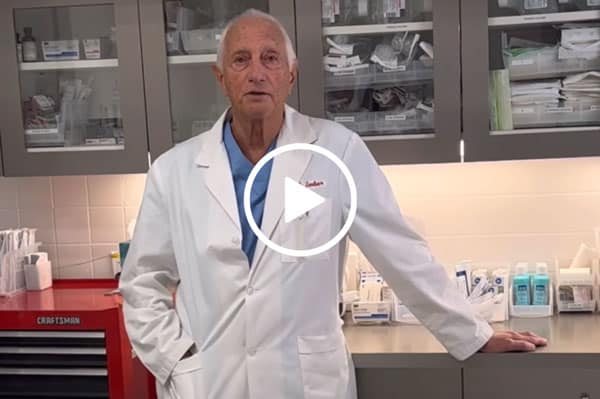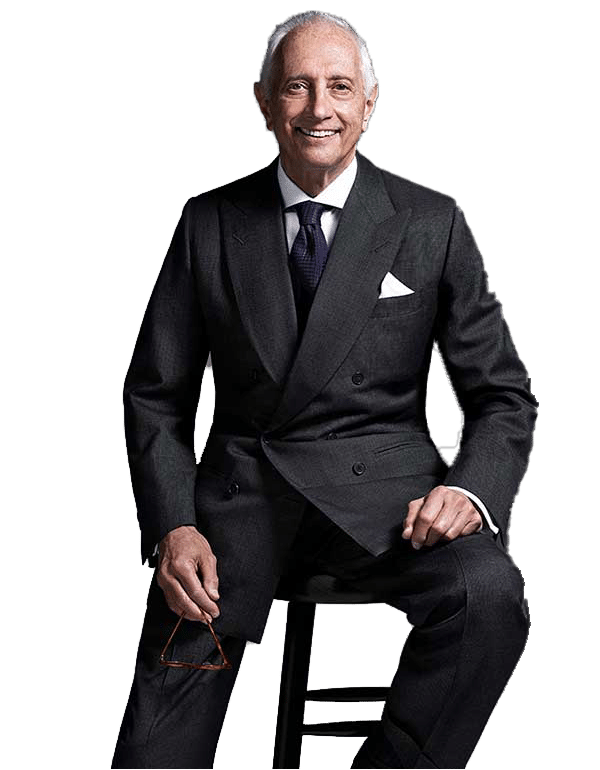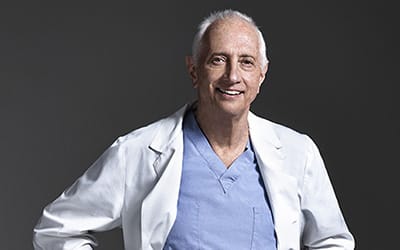
Limited Incision
Facelift Technique
Dr. Gerald Imber has a long-standing interest in anti-aging surgery and has always sought the simplest, least invasive route to meet his patient’s goals. There is no such thing as a “one size fits all” facelift. Surgical techniques should address specific problems, and the same procedure does not apply to every problem and every person. The Limited Incision Facelift Technique developed by Dr. Imber offers patients a better and easier solution to maintaining a version of themselves. Dr. Imber’s approach offers a selection of techniques that can be applied earlier, produce a natural result, and make the early middle-aged patient look appealingly young again.
Limited Incision FaceLift Goals
This surgical procedure focuses on improving loose jowls, and nasolabial folds, and reconstituting the angularity of the cheekbone area. It does not correct the very lowest portion of the neck or the forehead.
L.I.F.T. Candidates
Loss of elasticity and signs of aging begin early and even if a road map of facial wrinkles has not yet appeared, relief is often welcome. Our goal is to stop the progress before the changes have pushed from youthful to matronly. Schedule a consultation with Dr. Imber to discuss your treatment options.
What to Expect During Your L.I.F.T.
Leading up to surgery, Dr. Imber and his team of registered nurses will be in touch to review all details related to your procedure. Generally, Dr. Imber’s Limited Incision Facelift can take as few as two hours to perform, usually under sedation and local anesthesia. Other variations of the facelift may be employed by Dr. Imber, but all expectations will be discussed prior to your surgery.
Recovering From Your L.I.F.T.
Everyone recovers differently. Most can return to some sort of normal routine about 10 days after surgery, but it varies for everyone. Dr. Imber’s team of nurses and patient coordinators will review all recovery guidelines with you before and after your surgical procedure. Additionally, a member of Dr. Imber’s team is always available to answer any questions and make your recovery as easy as possible.

Words From Dr Imber!
“There is no such thing as a “one size fits all” facelift. Surgical techniques should address specific problems, and the same procedure is not applicable to every problem and every person. Different people in different stages of life have different requirements, this is where the Limited Incision Facelift can be an option.”
– Gerald Imber, M.D.
Limited Incision Facelift FAQ
- ○ How Does A Limited Incision Facelift Work?
- ○ What Type Of Anesthesia Will I Receive?
- ○ Are There Any Non-Invasive Alternatives?
- ○ Do I Need Any Special Garment Or Bindings?
- ○ Why Do I Need A Board-Certified Plastic Surgeon?
- ○ Will There Be Any Scarring?
- ○ How Much Does A Facelift Cost?
- ○ What Is Our Pledge on Before & After Images?
How Does A Limited Incision FaceLift Work?
Dr. Imber will review the entire facelift procedure with you leading up to your surgical appointment. In short, Dr. Imber’s Limited Incision Facelift, or Short Scar Facelift Technique, begins in the bottom of the sideburn and follows into the ear, behind the tragus, the little piece of cartilage that sticks out from the ear, and ends just behind the earlobe. Incisions are hidden, and signs of surgery disappear quickly. There is no scar on the hair or behind the ears or on the neck, and women can wear their hair up without worrying about the noticeable signs of traditional facelifts. Because the top of the incision is in the sideburn, there is no unsightly, telltale distortion of the hairline.
The procedure reverses the loss of elasticity that has caused facial sagging and results in a firm, straight jawline.
What Type Of Anesthesia Will I Receive?
Dr. Imber’s board-certified anesthesiologist has worked at his practice for over 20 years. His anesthesiologist will call you the night before surgery to review all guidelines necessary on the morning of your surgery. Dr. Imber’s nurses will also advise on any medical clearance in advance, if necessary. Most patients receive local anesthesia with sedation.
Are There Any Non-Invasive Alternatives?
If you are a candidate for a facelift, there aren’t any non-invasive options that can yield the results you are looking to achieve like that of a facelift.
Do I Need Any Special Garment Or Bindings?
Dr. Imber’s team of nurses will provide you with everything you need in advance of the surgery and are always available to answer any questions you may have.
Why Do I Need A Board-Certified Plastic Surgeon?
A board-certified plastic surgeon holds the highest levels of education and training needed to deliver the best results. This qualification is not easy to achieve, so by using a board-certified plastic surgeon, you know they meet the standards of the American Society of Plastic Surgeons.
Will There Be Any Scarring?
Dr. Imber pioneered a variety of facelift techniques that makes scarring virtually invisible. The important thing is a natural-looking result and no visible sign of surgery. While results vary for every patient, Dr. Imber will review expectations during your consultation and pre-operative appointment.
How Much Does A FaceLift Cost?
Actual surgical pricing will be determined at the time of consultation. Schedule your consultation with Dr. Imber today by emailing or calling our office at (212) 472-1800.
What is Our Pledge on Before & After Images?

We Offer Concierge Services
We want to make sure you are comfortable every step of the way, from managing your stay in New York City if you are out-of-town to post-surgical care and more.
Our concierge services include but are not limited to:
- Accommodation Coordination with the finest New York City Hotels
- Medical Photography
- Medical Clearance
- Private Duty Nurses and Escorts Post-Surgery
- Transportation Post-Surgery
- Pre- and Post-Operative Care
Related Links
RELATED ARTICLES
Breaking down the Facelift
Having performed thousands of facelifts, I have seen fads and miracles come and go. Some are a laughable waste of time, some outright dangerous. Plastic surgeons, myself included, have worked hard over the years to improve the procedure and serve our patients better....
Can treating marionette lines early prevent a Mini Facelift?
As our face ages, fat and collagen are depleted causing skin to sag, forming fine lines, wrinkles, and eventually facial folds. Aging can first begin around the eyes because the skin in this area is the thinnest. Another area where aging can be noticeable earlier on,...
How to Choose the Right Plastic Surgeon for a Facelift
Anything I say is going to be self-serving. The reality is a plastic surgeon who your friends have used and has had great results is a good place to start. You have to do your homework when it comes to choosing a plastic surgeon. It has to be someone with experience....
Conveniently located to serve New York City.

Dr. Gerald Imber
Dr. Gerald Imber is a board-certified, world-renowned plastic surgeon and strives to provide his patients the most natural results with the least invasive surgical techniques. He is recognized by US News and World Report and Castle Connolly as among the top 1% of plastic surgeons in the United States, on the staff of the Weill Cornell Medical Center, and directs his private surgical practice in New York City.
Dr. Imber has among the largest experience in facial rejuvenation and the prevention of facial aging. He has pioneered many less invasive surgical procedures that are now considered the gold standard among plastic surgeons, such as microsuction, a modified form of liposuction, to remove early jowls and tighten jawline, the extensive use of rejuvenating fat transfers, and the Limited Incision Facelift Technique, or Short Scar Facelift, a modern, less invasive facelift technique.
Dr. Imber performs a full range of cosmetic procedures, surgical and non-invasive, at his Manhattan office, including body, breast and nasal surgery, as well as facial reconstruction following Mohs micrographic surgery.






